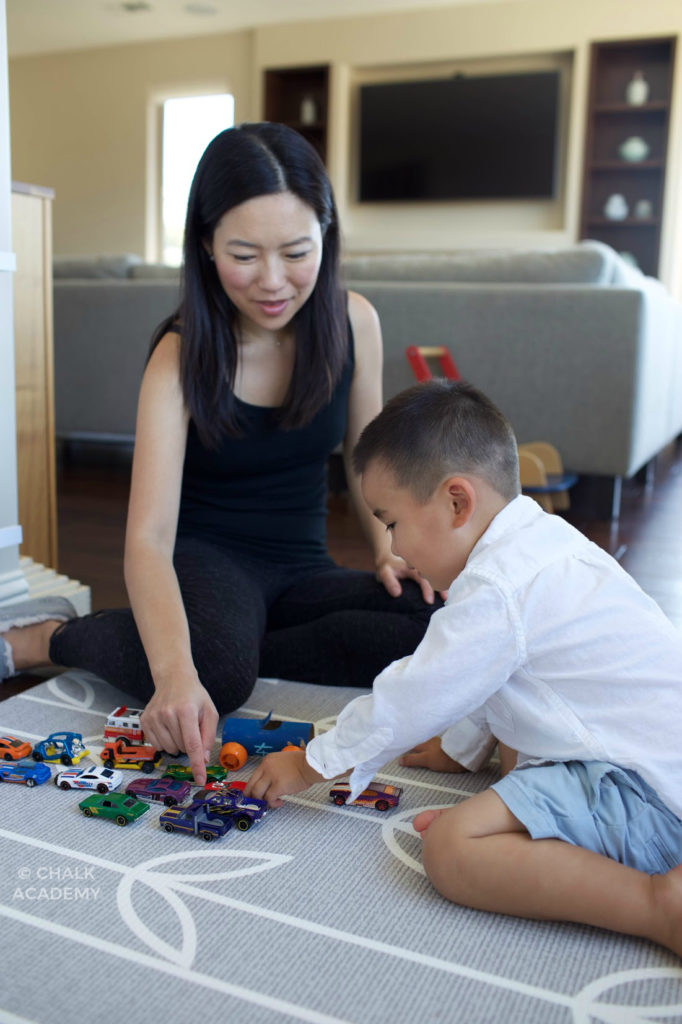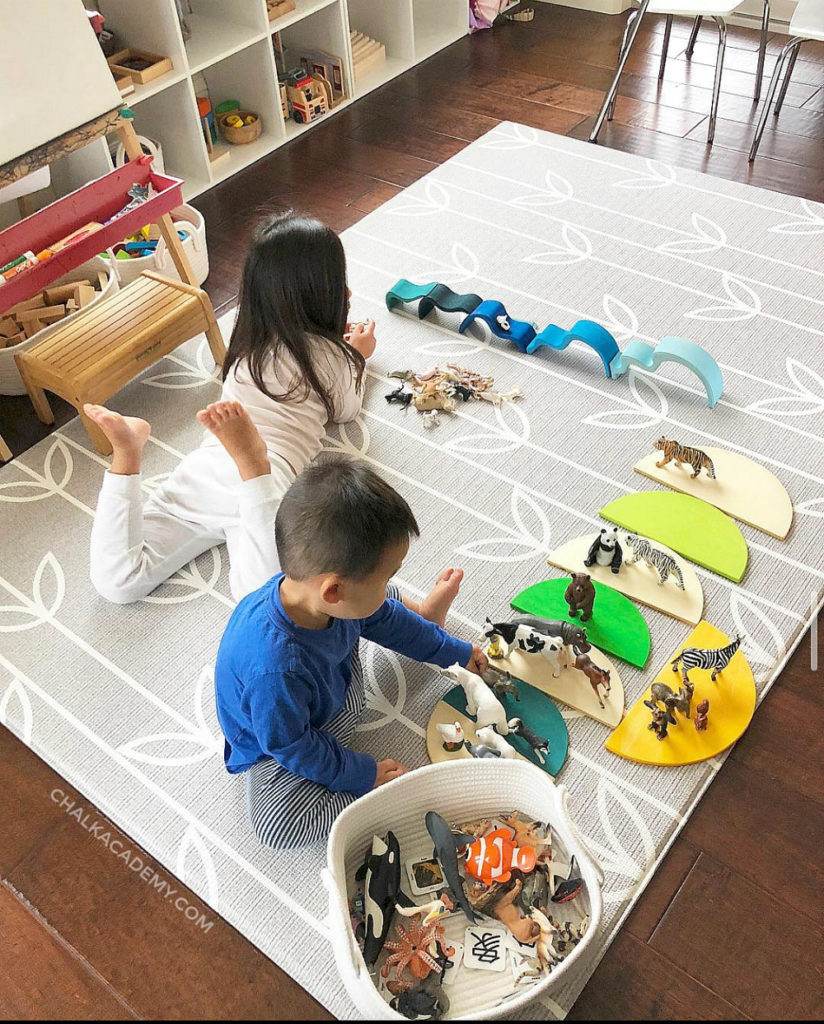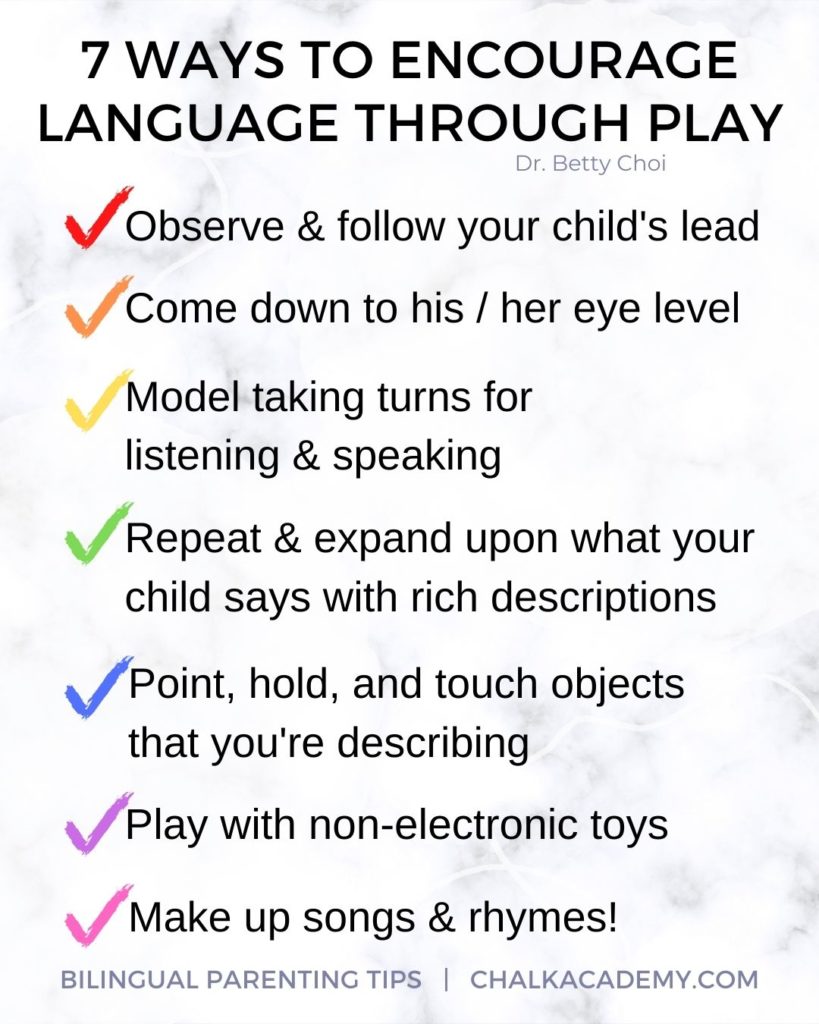7 Natural Ways to Improve Communication Skills Through Play

For multilingual families, play is the perfect chance for parents and children to speak the minority language as an integral part of the daily routine. By tapping into everyday spontaneous play, we can encourage and improve our children’s communication skills.
7 ways to improve communication skills through play
Play is often talked about as if it were a relief from serious learning. But for children play is serious learning.
Fred Rogers
Research strongly supports the benefits of learning through play, and language is no exception. Although children are not likely to announce “I am going to learn something right now”, play creates powerful, high quality opportunities across all development areas.
Through play, children learn how to:
- Make plans and follow through
- Learn from trial and error
- Use creativity, math, analytical skills
When playing together with siblings, friends, and caregivers, these opportunities are perfect for modeling rich language and improving communication skills.
1. Observe and follow your child

Follow your child’s lead and the following tips for everyday, regular play!
Have you noticed how babies are attracted to kitchen tupperware? And how kids love playing with cardboard boxes and nature finds?
Store-bought toys are not the only way to play. Observe what your child is looking at, and work with what captures their attention.
Try this: 5 Things Parents Should Do When Raising a Bilingual Baby
2. Come down to his/her eye level
Sitting versus standing next to your child can make a big difference in the connection during conversation. When you are face-to-face, you can see each other’s facial expressions and reactions more clearly. Kids can also see your mouth moving while speaking. These strategies are important for establishing rapport and improving communication skills.
3. Demonstrate active listening
Model taking turns for listening and speaking to your child. While caregivers should narrate and demonstrate speaking, patient listening without interruption is also crucial.
Use body language to show that you are engaged, such as by nodding and leaning in.
Active listening also involves repeating what your child says and offering validation. For example, if they look happy about something they created, you can say “我很高兴看到你很高兴! (Wǒ hěn gāoxìng kàn dào nǐ hěn gāoxìng! / I’m happy to see that you’re happy!)”
Try this: 20 Ways to Get Your Kids to Speak Chinese
4. Expand your child’s sentences
To take active listening one step further, gently expand short phrases and sentences.
For instance, your child might say: “doll bridge / 娃娃桥 (Wáwá qiáo)”/
In response, you can recast and say: “I see the doll on the bridge! The yellow doll is standing on the bridge. / 我看到桥上的娃娃! 黄色的娃娃站在桥上。(Wǒ kàn dào qiáo shàng de wáwá! Huángsè de wáwá zhàn zài qiáo shàng).”
5. Use body language to improve communication skills
Point, hold, and touch objects that you’re describing.
When children are learning how to communicate in a new language, visual and tactile input reinforce what they hear.
Just like how babies will initially not understand what commands like “come here” means, use arm motions that signal coming closer.
If you’re talking about a leaf, pick it up, and place it in your child’s hand.
When your child is jumping up and down, bounce with them and say 蹦蹦跳跳 (bèng bèngtiào tiào) with excitement!

6. Play with non-electronic toys
To quote the American Academy of Pediatrics “Electronic and digital add-ons increasingly found even in physical toys may actually hinder caregiver-child interactions.”
If you follow our Instagram stories, you can hear how much dialogue happens when my kids play! This is because we don’t have battery-operated talking toys that distract and interrupt natural communication. My kids have to create their own sound effects and dialogue. They often have their toys talk together through imaginative scenarios.
When parents and caregivers play with their children, these are golden opportunities to use role-playing as examples of clear and effective communication.
Of course, the beauty of open-ended toys includes quiet play. Silence is also important for observation and focus, too!
7. Make up songs and rhymes!
Adding melody to words can make communication extra fun!
By repeating a few words in a silly tune or singing a sentence, new vocabulary can be remembered more easily.
For example, when my kids were climbing trees at the beach, we made up the following song to the popular tune of “Row, Row, Row Your Boat”:
爬, 爬, 爬上树 爬上这棵树 慢慢的 慢慢的 慢慢的 慢慢的爬上树
Notice how often 爬 is repeated in the first line! The rhythmic “慢慢的” makes this phrase easy to remember.
Explore this: Best Chinese Children’s Songs and Nursery Rhymes

What other tips do you have for improving communication skills through play?
Please feel free to share in the comments! We’d love to hear about your experiences with communicating with your children or students!
Hi Betty,
You mentioned a link in the above description “ See these videos in my Instagram stories of how my son at 13months and I communicate while he plays with a water container”. I tried to click on the link but it says it’s no longer available.
I am trying to master speaking in mandarin to my child and would love to see a video example of how you interacted with your son/daughter.
Thank you 😊
Hi Jenny! Sorry for just seeing your question now. In my Instagram story highlights, check the “Baby” circle for videos. @speechtherapymom is also a great account to follow – she shares a lot about bilingual baby/toddler speech!